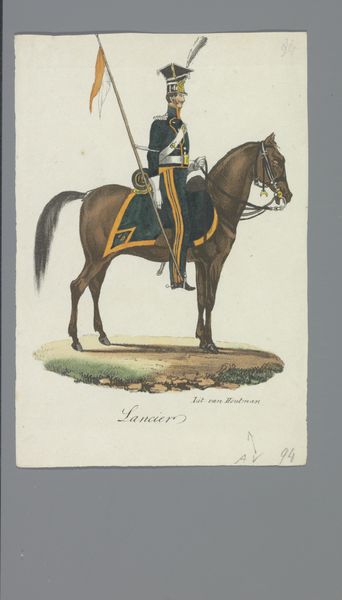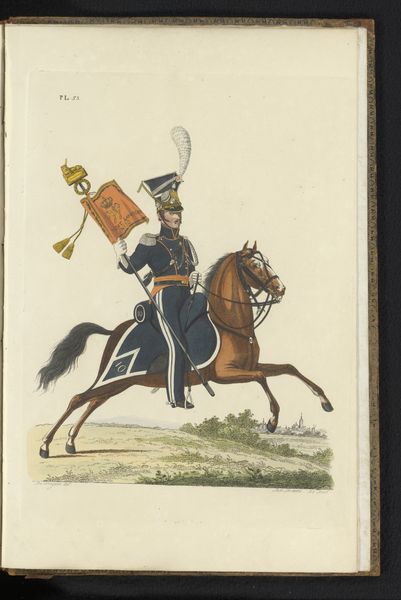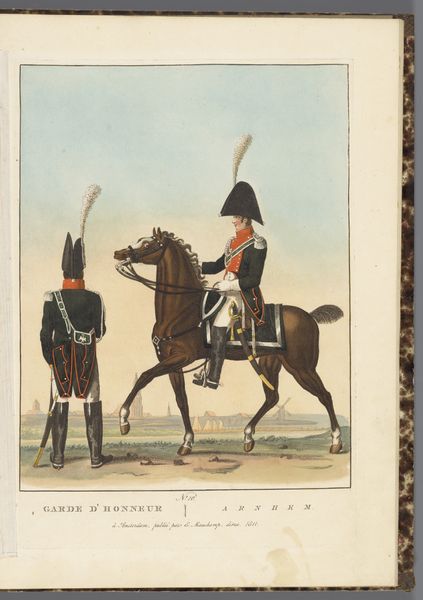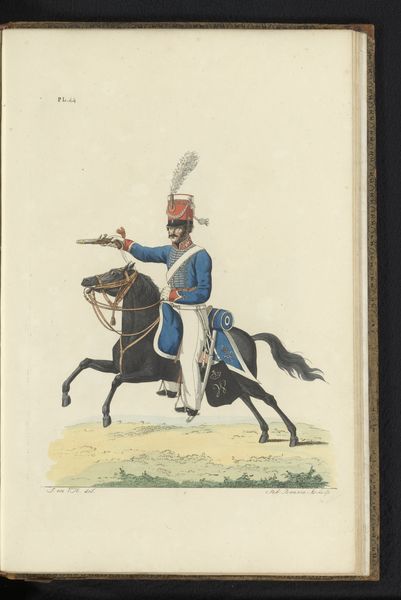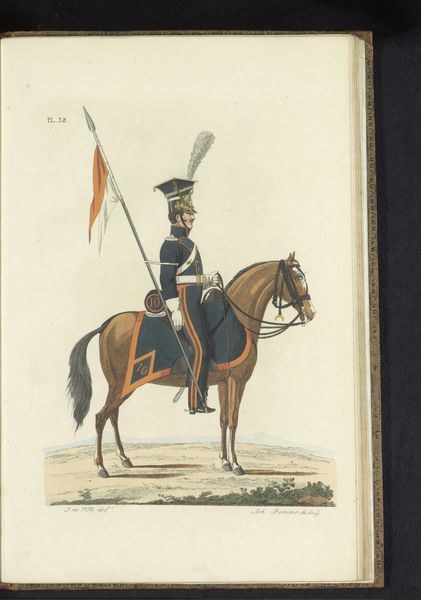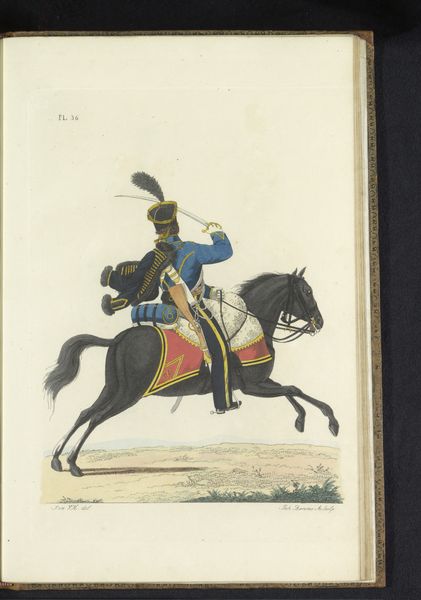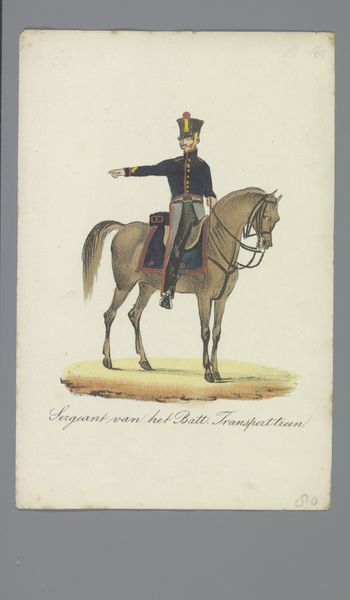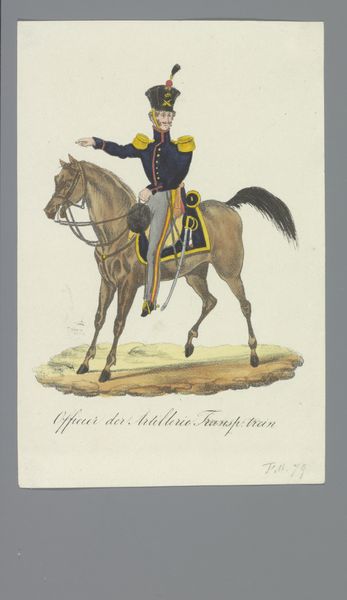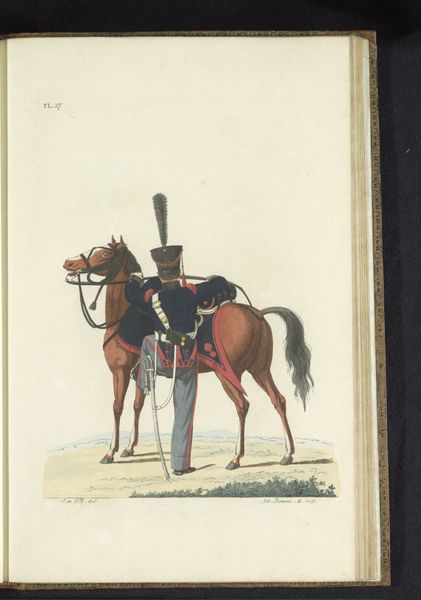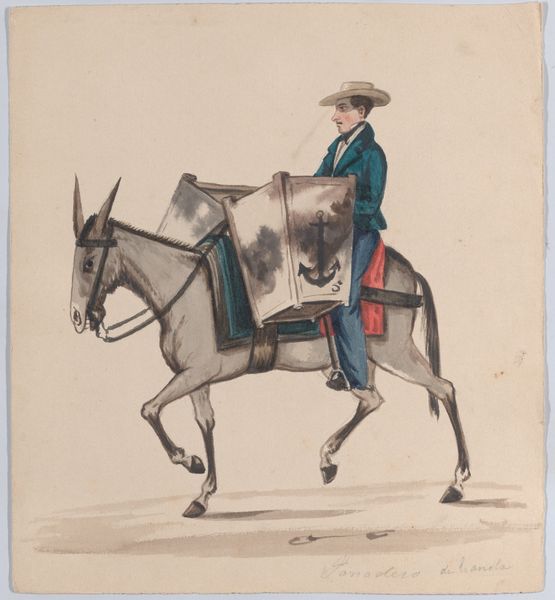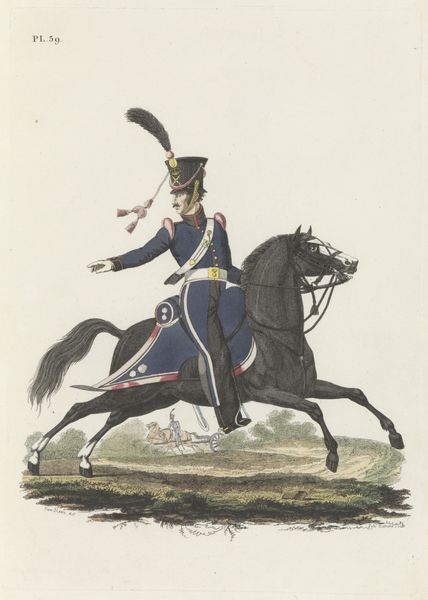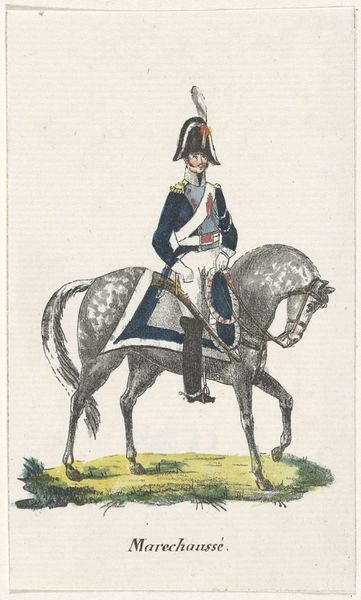
painting, watercolor
#
portrait
#
painting
#
landscape
#
figuration
#
watercolor
#
romanticism
#
watercolour illustration
#
watercolor
Dimensions: height 300 mm, width 205 mm
Copyright: Rijks Museum: Open Domain
Editor: This is "Maréchaussée, te paard, in groote tenue" from 1823 by Joannes Bemme. It's a watercolor and feels so precise and illustrative. How would you interpret this piece? Curator: I see it primarily as a document of production. Consider the watercolor medium – relatively inexpensive and easily transportable. It speaks to a need for efficient record-keeping within the military context, wouldn't you agree? This wasn't about high art, but about generating accessible visuals of uniforms. Think of the labor involved in the meticulous rendering of each detail, from the braiding on the uniform to the horse’s musculature. Editor: So, it's less about artistic expression and more about… industrial representation? Curator: Precisely! The artist becomes an artisan. The repetitive nature of these uniform depictions reflects the broader military-industrial complex. Moreover, the watercolor itself – how was it sourced, produced, and distributed? Was this watercolor a local product? Did that influence the piece? The raw materials dictate so much! Editor: That’s interesting, viewing it through the lens of material production. I usually think of Romanticism as focused on emotional expression, and hadn’t considered the practical side. Curator: Exactly! The dominant ideology might celebrate individual genius, but a materialist approach unearths the often-invisible labor and material conditions that underpin artistic creation. Editor: I hadn't thought of Romanticism through that lens, so it really broadens the way I view the work now. Curator: Indeed. Examining art in terms of its production reveals deeper meanings embedded in even the most seemingly straightforward image.
Comments
No comments
Be the first to comment and join the conversation on the ultimate creative platform.
